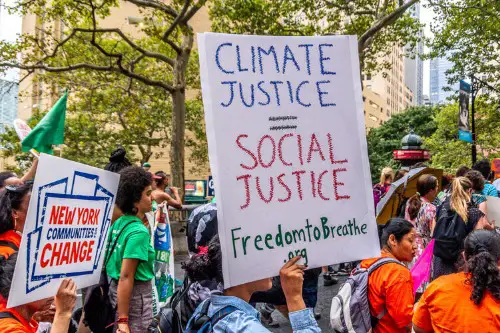1. The Rise of Social Media Comparison

We scroll, double-tap, and refresh endlessly, often without realizing how much it affects our self-worth. Social media creates a constant highlight reel of everyone else’s best moments, leaving us feeling behind or inadequate. The problem is, these platforms are designed to hook attention, which amplifies envy and anxiety. Over time, this daily comparison chips away at confidence and emotional stability.
Studies have shown a correlation between heavy social media use and feelings of loneliness, depression, and decreased life satisfaction. People often forget that what they see online is curated, not reality. The more we measure ourselves against impossible standards, the more our sense of accomplishment feels insufficient. This trend has become so pervasive that it shapes entire social dynamics and personal identity formation.
2. Economic Insecurity and Wage Stagnation

Many Americans live paycheck to paycheck, feeling like no matter how hard they work, they’ll never get ahead. Wage stagnation has meant that even full-time work often doesn’t translate to financial stability. The stress of bills, debt, and unexpected expenses can create a constant low-level anxiety. Over time, this chronic financial worry seeps into mental health, relationships, and overall well-being.
The lack of upward mobility has left people feeling trapped and frustrated, which can manifest as irritability, despair, or hopelessness. Economic stress isn’t just about money; it’s about control and autonomy over one’s life. Feeling powerless in this way can drive emotional exhaustion and resentment. It’s a structural problem that affects not just individuals but families and communities.
3. Political Polarization and Media Overload

Our news cycles are now 24/7, often sensationalized, and designed to provoke outrage. With political divides so stark, people are constantly bombarded with stories that make them anxious, angry, or fearful. This creates a sense of instability and hyper-vigilance, as if danger or injustice is always just around the corner. Emotional fatigue from endless conflict can be overwhelming and demoralizing.
Moreover, the internet allows for echo chambers, reinforcing fears and biases rather than providing balanced perspectives. When every interaction feels like a debate or moral test, stress levels soar. People start internalizing collective anxiety as personal emotional strain. The result is a population that feels perpetually tense and divided, even in everyday life.
4. The Gig Economy and Job Precarity

Many Americans work multiple jobs or rely on freelance work without security, benefits, or guaranteed income. This unpredictability creates a constant undercurrent of stress and insecurity. Even “flexible” work can mean irregular hours, no health coverage, and endless worry about the next paycheck. The emotional toll is chronic and often invisible, affecting sleep, mood, and relationships.
Workers feel like they are running on a treadmill that never ends, with little room for career growth or stability. The lack of benefits like paid leave or healthcare makes every minor setback a potential crisis. Anxiety about money and survival bleeds into almost every aspect of life. This trend reshapes how people plan for the future—or avoid planning entirely.
5. Loneliness Epidemic

Despite being more connected digitally than ever, Americans report feeling increasingly isolated. The breakdown of community structures, fewer long-term friendships, and increased mobility contribute to this sense of disconnection. Human beings need meaningful interaction to thrive emotionally, and when those interactions are sparse, mental health suffers. Loneliness is linked to depression, anxiety, and even physical health issues like heart disease.
The irony is that many “connections” today are shallow or transactional. People may have hundreds of social media friends but few people they can truly rely on. This gap between digital and real-life connection fosters emotional fragility. Chronic loneliness quietly erodes resilience, making everyday stressors harder to manage.
6. Parenting Pressure and the Myth of “Perfect” Families

Parenting culture today is intense, with social media fueling constant comparison and advice overload. Many parents feel judged no matter what they do, and this pressure can create guilt, anxiety, and burnout. The expectation to provide the perfect upbringing or flawless social media image is unrealistic and emotionally draining. Children are affected too, absorbing the stress and uncertainty of their caregivers.
The rise of “helicopter parenting” and over-scheduling adds to the tension. Parents are torn between fostering independence and keeping kids safe, all while juggling jobs and household responsibilities. This constant balancing act can erode mental health and family cohesion. Emotional strain from parenting pressure has become a widespread, generational issue.
7. Health Anxiety and Overmedicalization

People are more aware of health risks than ever, but this awareness can spiral into anxiety. Regular access to online medical information can make minor symptoms feel catastrophic. Fear of illness, combined with rising medical costs, keeps many in a persistent state of worry. Chronic health anxiety can disrupt sleep, focus, and social life.
Additionally, the normalization of frequent testing and medical intervention increases pressure to monitor every aspect of one’s body. While vigilance is valuable, obsession can lead to stress and self-doubt. People begin equating normal bodily variations with failure or neglect. This trend links directly to increased emotional fragility and hyper-vigilance.
8. Climate Anxiety and Environmental Worries

The constant news about climate change, natural disasters, and environmental degradation has created a generation acutely aware of existential risks. Even if immediate danger isn’t present, this awareness can trigger chronic worry. People feel a sense of helplessness, as solutions seem slow and insufficient. The psychological impact includes depression, hopelessness, and anxiety about the future.
Youth and adults alike report feeling a persistent tension between knowledge and action. Feeling responsible yet powerless to fix systemic problems fuels emotional distress. This anxiety is not irrational—it’s grounded in real-world risks—but it has become a shared, societal strain. Climate awareness has reshaped how many Americans perceive their own security and future.
9. Digital Addiction and Screen Overload

Our devices keep us tethered to work, news, and social updates, often leaving little downtime. The constant stimulation rewires attention spans and increases stress hormones. Excessive screen time interferes with sleep, relationships, and the ability to decompress. Over time, it contributes to irritability, burnout, and emotional volatility.
Notifications and alerts condition people to be reactive rather than reflective. Even small interruptions can trigger anxiety or a sense of urgency. The line between work and life blurs, leaving little mental space to recover emotionally. This digital dependence subtly undermines mental resilience across the population.
10. Rising Cost of Higher Education

College and professional training are more expensive than ever, leaving students with crushing debt. For many, the financial burden feels insurmountable and creates chronic stress that lingers long after graduation. This pressure can affect career choices, relationships, and even mental health. The emotional consequences aren’t just financial—they’re existential, as people question their decisions and prospects.
Debt shapes life plans, delaying home ownership, marriage, or family building. Many feel trapped in a cycle of repayment, unable to fully pursue passions or opportunities. Anxiety about the future becomes a constant companion. The weight of educational costs adds a quiet, ongoing strain to adulthood.
11. Substance Use and Self-Medication

Faced with stress, isolation, or anxiety, many Americans turn to alcohol, prescription drugs, or other substances. While this may offer temporary relief, it often deepens emotional problems over time. Dependency can exacerbate feelings of shame, isolation, and loss of control. Substance use is both a symptom and a contributor to widespread emotional distress.
The opioid epidemic and rising alcohol consumption highlight how structural and personal stressors intersect. People often self-medicate when mental health resources are inaccessible or stigmatized. Short-term relief masks long-term damage, creating a vicious cycle. Emotional vulnerability becomes both a cause and effect of substance reliance.
12. Decline of Stable Communities and Social Safety Nets

Neighborhoods, religious organizations, and community groups that once offered support are weaker today. This decline leaves individuals feeling unsupported during crises or everyday struggles. Without reliable social structures, emotional burdens feel heavier and more isolating. The erosion of these networks contributes to collective anxiety and stress.
People no longer have the same sense of belonging or shared responsibility, which used to buffer emotional strain. Isolation isn’t just physical—it’s structural, embedded in the very design of modern life. Social safety nets, both formal and informal, are fraying just as stressors are multiplying. This lack of communal support magnifies the impact of every other trend on this list.
This post 12 Trends That Explain Half of America’s Emotional Damage was first published on American Charm.


